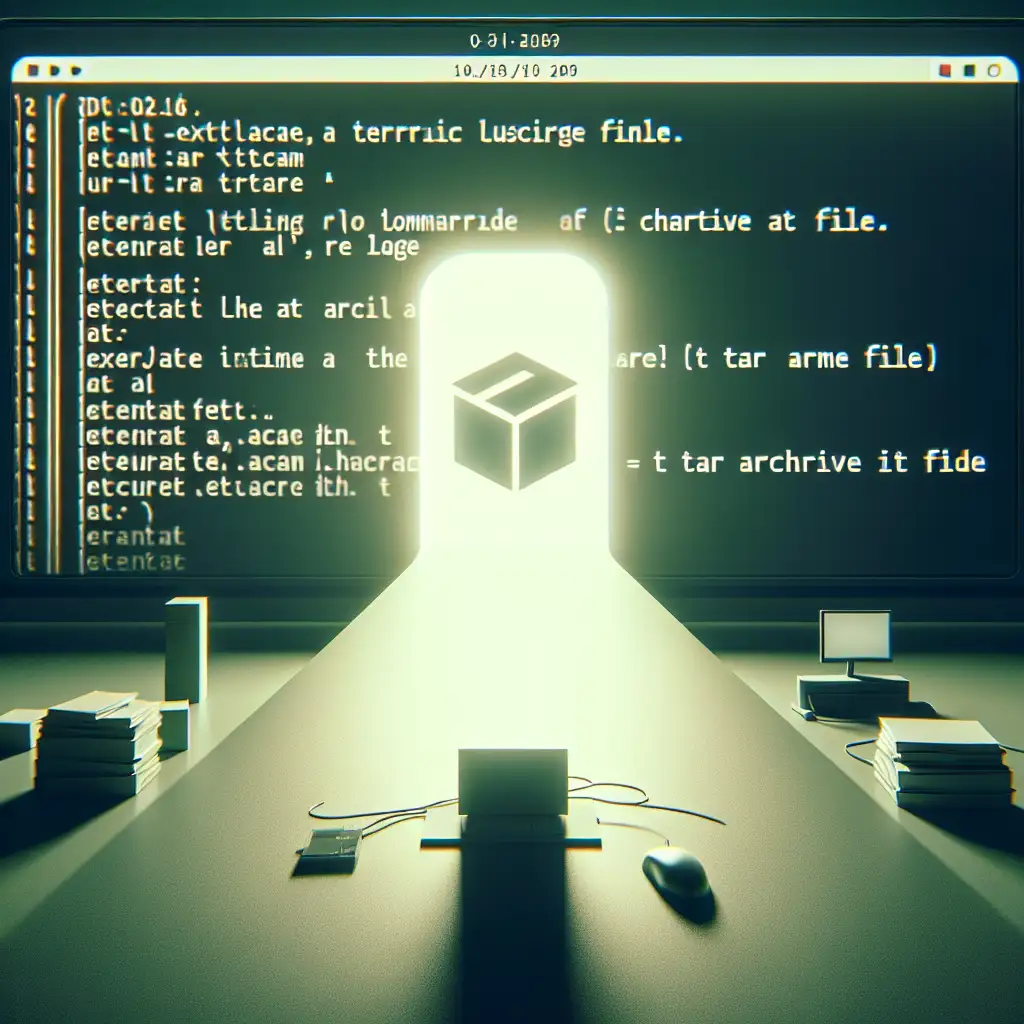Mastering Tar Files in Linux: Practical Extraction and Management
Avoiding GUI overhead is almost mandatory when working with server environments or automating workflows. If you manage code deployments, logs, or system backups, you’ll run into tarballs—either as simple .tar archives or as compressed variants (.tar.gz, .tar.bz2). Handling them efficiently from the shell can prevent downtime and speed up routine operations.
Files archived as tarballs are foundational in Linux environments. The tar utility is part of GNU coreutils (use tar --version, e.g., GNU tar 1.34 or later). Its usage—far from limited to backups—includes bundling application releases, system configs, and log exports for forensic analysis.
Typical mistake: extracting large archives interactively via GUI, risking timeouts or permission issues. Command-line extraction is deterministic, scriptable, and suited for automation (think CI/CD and cron jobs).
What Is a Tar File?
- Format: Tape ARchive (
tar) concatenates directories/files into one file. Compression is optional. - Common Extensions:
.tar— uncompressed.tar.gz,.tgz— gzip compressed.tar.bz2— bzip2 compressed
Compression can be chained (.tar.xz, .tar.lzma), but those cases need additional flags/utilities.
Fast Extraction: Typical Use Cases
Case 1: Extract Plain .tar Archive
Unpack all files into the current directory:
tar -xf backup-2024-06-13.tar
-x(extract),-f(archive file)- Output goes into your present working directory—be aware of potential file collisions.
Case 2: Extract Compressed Tarballs
tar -xzf app-release-v1.6.2.tar.gz
tar -xjf data-logs-20240613.tar.bz2
-zenables gzip filter,-jenables bzip2.- Omit the wrong flag and you’ll get
gzip: stdin: not in gzip formator similar extraction errors.
Target Directory Extraction
Always create the destination directory before extracting:
mkdir -p ~/work/restore
tar -xf db-backup.tar -C ~/work/restore
Note: Tar won’t auto-create extraction paths. If omitted, files land in the current directory—cluttering or overwriting files unexpectedly.
Advanced: Listing and Selective Extraction
To list archive contents (without extracting):
tar -tf archive.tar.gz
Parses and outputs filenames. Useful on production to verify package content before deploying.
Extract a specific file or directory:
tar -xzf system-snapshot.tar.gz etc/ssh/sshd_config
Will error if the path doesn’t exist in the archive:
tar: etc/ssh/sshd_config: Not found in archive
tar: Exiting with failure status due to previous errors
Validate available paths with tar -tf.
Verbose Output & Large Archives
For monitoring extraction progress (especially with large or slow I/O archives):
tar -xvzf video-assets.tar.gz
-vyields a file-by-file log.- Side note:
-vcan significantly slow operations on massive archives; tailor verbosity to the context.
Common Tar Pitfalls
| Symptom | Root Cause / Fix |
|---|---|
| “Cannot open: No such file or directory” | Wrong path, check with ls or tab complete. |
| Extraction inside a read-only directory | Insufficient permissions. Use sudo if appropriate. |
Archive contains absolute paths /path/to/file | May override critical system files; audit before use. |
| Extracted files have root ownership | Archive created as root—run tar as root or chown. |
Quick Reference
| Task | Command Example |
|---|---|
Extract .tar | tar -xf archive.tar |
Extract .tar.gz | tar -xzf archive.tar.gz |
Extract .tar.bz2 | tar -xjf archive.tar.bz2 |
| List contents | tar -tf archive.tar.gz |
| Extract file(s) | tar -xf archive.tar.gz path/to/file.txt |
| Extract to dir | tar -xf archive.tar -C /opt/data |
Tip: For extra-large archives, consider streaming extraction to avoid filling /tmp:
curl https://repo.example.org/huge.tar.gz | tar -xz -C ./unpacked/
Works well in CI/CD pipelines or environments with strict disk quotas.
When managing Linux systems at scale, knowing the nuances of tar saves hours and protects against accidental data loss. Better to automate with confidence than retrace after a GUI misfire.
Questions or nuanced edge cases (“what about xattrs?,” “how to handle sparse files?”) often arise. Check man tar for version-specific flags or drop questions below.
